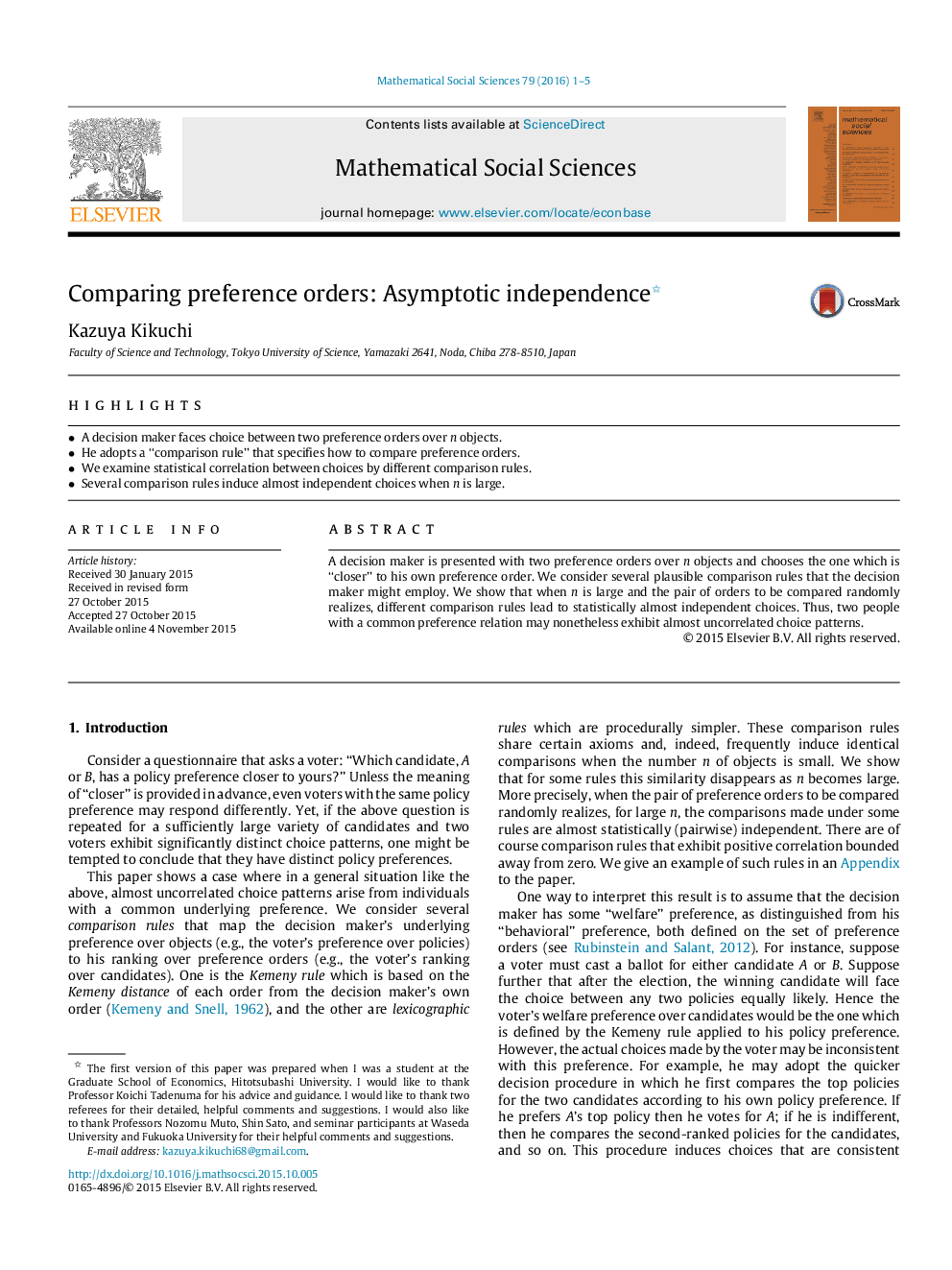| Article ID | Journal | Published Year | Pages | File Type |
|---|---|---|---|---|
| 973163 | Mathematical Social Sciences | 2016 | 5 Pages |
•A decision maker faces choice between two preference orders over nn objects.•He adopts a “comparison rule” that specifies how to compare preference orders.•We examine statistical correlation between choices by different comparison rules.•Several comparison rules induce almost independent choices when nn is large.
A decision maker is presented with two preference orders over nn objects and chooses the one which is “closer” to his own preference order. We consider several plausible comparison rules that the decision maker might employ. We show that when nn is large and the pair of orders to be compared randomly realizes, different comparison rules lead to statistically almost independent choices. Thus, two people with a common preference relation may nonetheless exhibit almost uncorrelated choice patterns.
